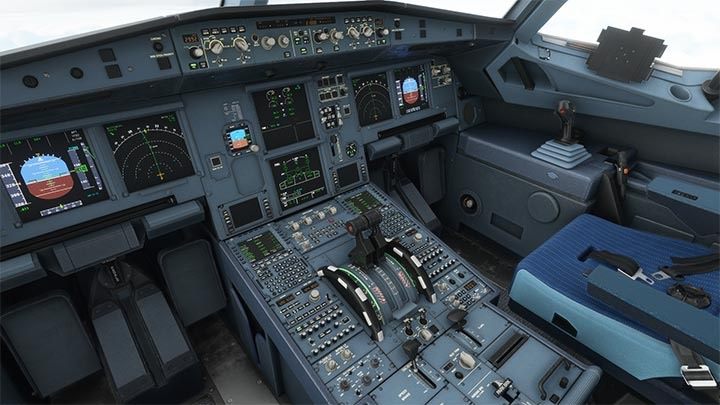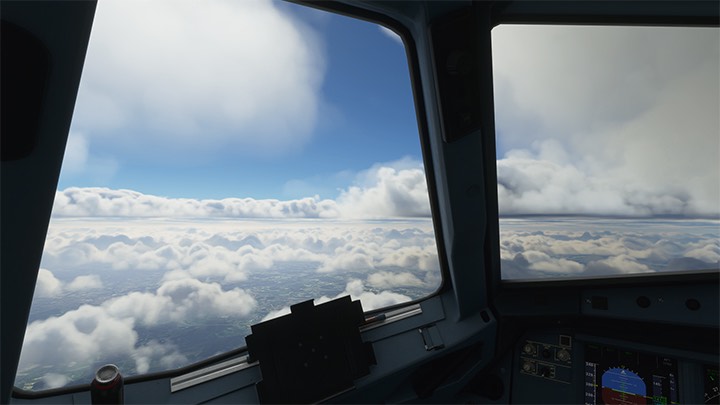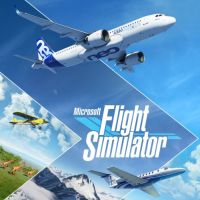Microsoft Flight Simulator: Tips for taking off - Passenger aircraft
From this page of the Microsoft Flight Simulator guide, you will learn how best to start your adventure with cruise flights and how to prepare for them. You will also find the main differences between general aviation and passenger transport and a glossary of the most useful terms that are often used in civil aviation.
Starting Tips
- Start flying with passenger aircraft when you are familiar with general aviation and smaller aircraft. Take into account that these flights will be much more "technical", with more emphasis on the operation of the cockpit than just piloting and admiring the views.
- To begin with, choose fairly short routes between airports, so that the flight does not last more than an hour. Thanks to this, you will be practically all the time busy with something and there will be no boredom, when, for example, a plane flies on autopilot and the same altitude for several hours across the ocean.
- At first, you can rely on flight plans created directly in the game, but at the same time search for them on dedicated pages to compare them with each other, or learn how to search for key information. You'll quickly discover their common elements and start applying your own flight computer programming, which is more engaging.
- For longer routes, consider the possibility of using mods that add new gameplay mechanics, such as tending to passengers. For a list of the most interesting additions, see the chapter The Best Mods.
- The default passenger planes in the game can be quite challenging and there might be some bugs in subsequent updates spoiling their performance. If the machine suddenly starts to fly in a strange direction or go out screens in the cockpit - it may be the fault of the game.
What you need to know about passenger aircraft?
If you are not yet a fan of flying passenger planes, then for a start it is worth knowing that they offer a completely different experience from the small puddle jumpers or agile aerobatic aircraft. For a number of reasons, operating with instruments in the cockpit and machine systems comes to the fore here, and all the rest is just an addition.
Passenger planes are slow and heavy, with a huge turning radius. So they can not explore the area by flying between the peaks of the mountains or in the canyons, as small planes do. The windows are small, and the cruising altitude is usually very high, which still excludes admiring the views from above, except possibly different layers of clouds. Besides all flights are conducted according to IFR procedures (that is, indications of instruments in the cockpit) and it is on them that the pilot's attention is focused most of the time.

When flying a passenger plane, safety is the most important thing, so in addition to following all the rules, most procedures and calculations are taken over by the on-board computer. So before you start, you need to spend a lot of time to enter the necessary information into it.
In general, flying passenger aircraft has as much to do with small avionics as driving coaches on long-distance routes to freedom of movement exhibited by passenger car. It requires a pre-defined plan: first getting out of the airport area along a predetermined route, then flying through air corridors to the destination and there, again according to a predetermined procedure, approaching the airport and landing itself.
Definitely, the most interesting is the pre-flight phase, associated with the programming of the aircraft for a given route, and then the landing itself. Almost everything can be done sitting in the cockpit and clicking a few buttons, the rest will be taken care of by the autopilot, which you need to check from time to time. Some airports with state-of-the-art ILS systems allow for fully automatic landings, although in practice, pilots always prefer manual landings and take over at the end of the approach.

Glossary
Below we present a glossary of the most useful concepts in air transport. You do not have to immediately learn them all by heart, they will come naturally with time and subsequent flights.
- Airway - air route or air corridor - the main route with a specific designation, consisting of specific navigation points, which the aircraft moves between the SID and STAR sections.
- ALT - short for "Altitude" that is, the altitude at which the aircraft flies.
- APU - Auxiliary Power Unit - an additional engine in the aircraft to assist the start-up of the main jet engines.
- Cold Start - the procedure for starting the aircraft on the tarmac until taxiing is ready includes the preparation and activation of all avionics systems and the activation of engines.
- Cost Index - individual numerical value for each airline. Expresses the ratio of fuel costs to all other costs, which affects the speed and time of the route.
- FL - Flight Level - the flight altitude based on the standard barometric pressure of 1013.25 hPa (or 29.92 inHg), expressed in the format FL x100 ft (fl290 = 29000 ft).
- Flaps - movable elements of the wings that allow you to stay in the air at low speeds. The flaps are retracted during takeoffs and landings.
- ICAO - International Civil Aviation Organization. Completion of the flight plan requires knowledge of airport codes according to ICAO standard, e.g. KLAX (Los Angeles International), EGLL (Heathrow Airport), EPWA (Chopin - Warsaw Airport).
- ILS - Instrument Landing System - an instrument-based assisted landing system at airports. Allows you to land in bad weather or at night.
- MCDU - Multipurpose Control and Display Unit - onboard computer and "heart" of a passenger plane. Allows you to program the machine to fly on a predetermined route.
- METAR - the format of the weather report in a special code.
- Overhead - a panel of buttons and switches above the pilot's head.
- SID - Standard Instrument Deperature - procedures for departure from the airport to the air corridor according to the established route and altitude.
- STAR - Standard Terminal Arrival Route - arrival procedures to the airport from the air corridor according to the established route and altitude.
- Transition Altitude - the altitude at which the local barometric pressure is changed to the standard barometric pressure. The ceiling is then changed from feet (ft) to FL (flight level) according to the standard barometric pressure of 1013.25 hPa (or 29.92 inHg). Transition altitude is different for each country.
- TOGA - Take Off and Go Around - the position of the engine throttle at the highest power, used for take-off, emergency landing abort, and transition to the second circle.
- Waypoint - a navigation point on the way to the destination airport.
- V1, Vr, V2 - the most important take-off speeds for a passenger aircraft:
V1 - the speed at which you can still cancel take-off and decelerate the aircraft on the runway;
Vr (rotate) - the speed at which the pilot lifts the aircraft from the runway to the top and begins the climb;
V2 - the safety speed in the event of a single engine failure at which the aeroplane can safely ascend to an altitude allowing further emergency procedures to be carried out.
- Microsoft Flight Simulator 2020 Guide
- Microsoft Flight Simulator: Game Guide
- Microsoft Flight Simulator: Passenger aircraft
- Microsoft Flight Simulator: Passenger aircraft - Basics
- Microsoft Flight Simulator: Tips for taking off - Passenger aircraft
- Microsoft Flight Simulator: How to create passenger aircraft flight plan?
- Microsoft Flight Simulator: Cockpit of a passenger aircraft
- Microsoft Flight Simulator: Autopilot in a passenger aircraft
- Microsoft Flight Simulator: How to program MCDU on-board computer?
- Microsoft Flight Simulator: Example flight
- Microsoft Flight Simulator: Passenger aircraft
- Microsoft Flight Simulator: Game Guide
You are not permitted to copy any image, text or info from this page. This site is not associated with and/or endorsed by the developers and the publishers. All logos and images are copyrighted by their respective owners.
Copyright © 2000 - 2025 Webedia Polska SA for gamepressure.com, unofficial game guides, walkthroughs, secrets, game tips, maps & strategies for top games.
